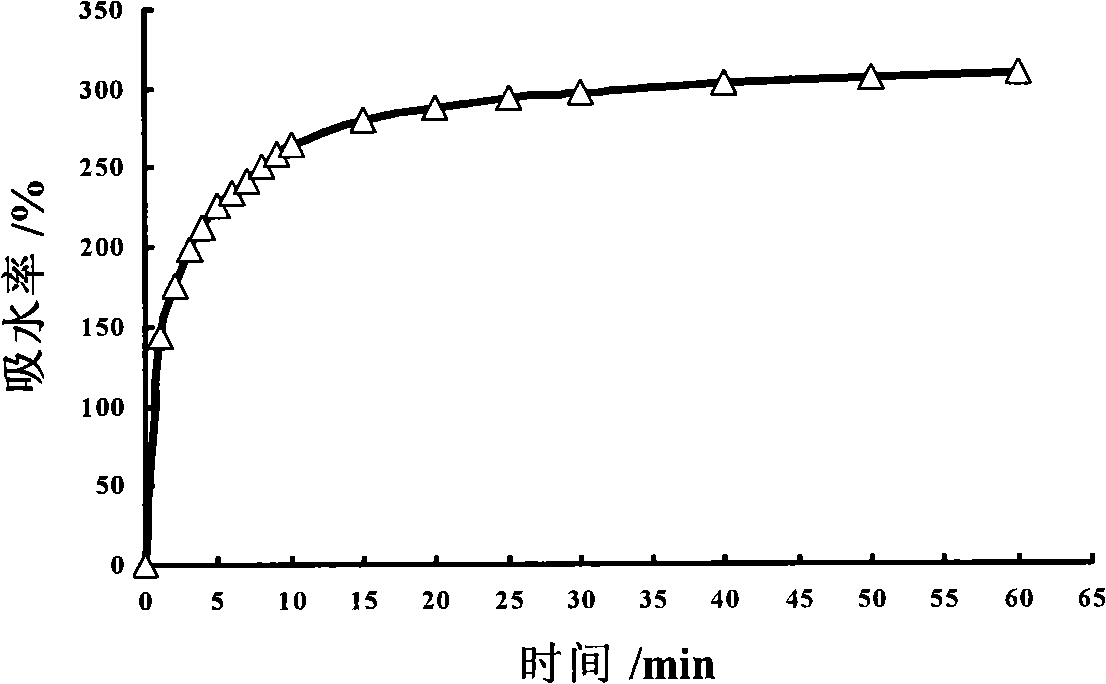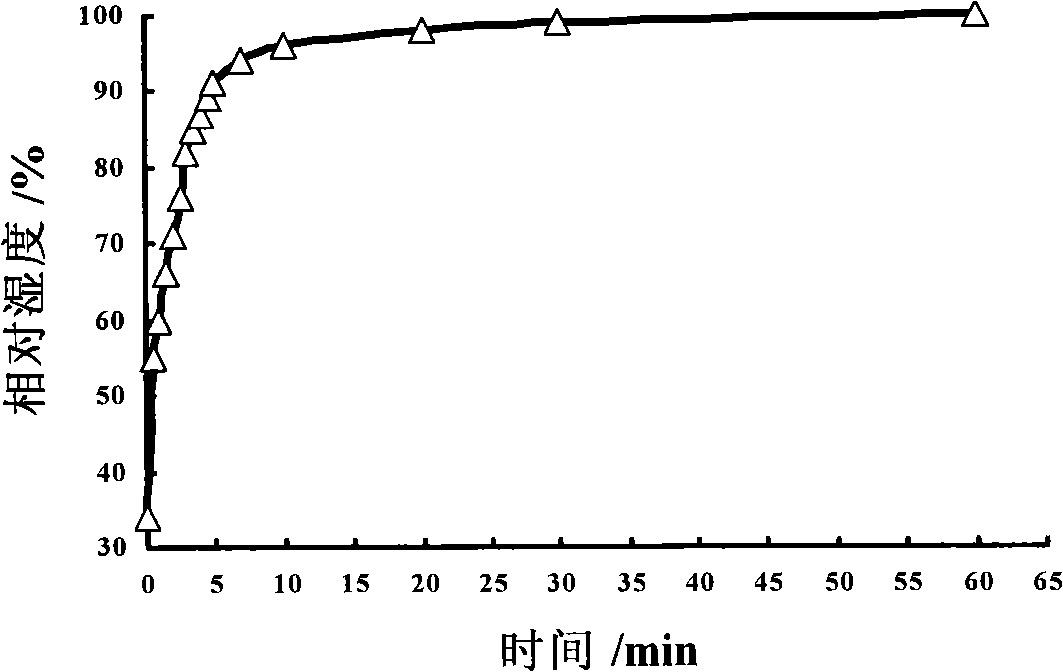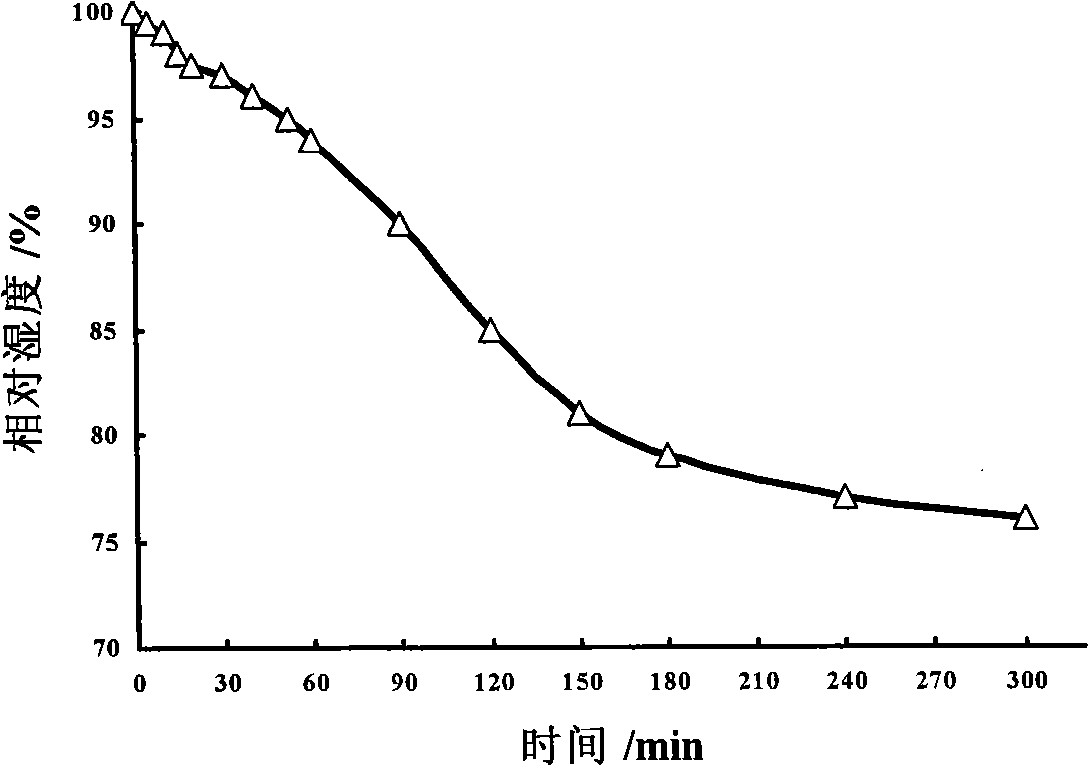Emulsion type amphiphilic polymer resin and preparation and application thereof in preparation of coating
An amphiphilic polymer and emulsion-type technology, applied in the field of polymers, can solve the problems of slow speed, low responsiveness, easy powder falling, foaming, etc., and achieve the effect of overcoming high energy consumption and good application prospects
- Summary
- Abstract
- Description
- Claims
- Application Information
AI Technical Summary
Problems solved by technology
Method used
Image
Examples
Embodiment 1
[0052] (1) Preparation of emulsion type amphiphilic polymer resin
[0053] Formula: by weight
[0054] 10 parts of methacrylic acid, 80 parts of methyl methacrylate, 50 parts of butyl acrylate, 10 parts of hydroxypropyl methacrylate, 10 parts of diacetone acrylamide, 1 part of sodium lauryl sulfate, Tween-202 parts , 2 parts of potassium persulfate, 2 parts of sodium bicarbonate.
[0055] Process: 0.5 parts of methacrylic acid, methyl methacrylate, butyl acrylate, hydroxypropyl methacrylate, diacetone acrylamide and sodium lauryl sulfate, 1 part of Tween-20, Mix 1 part of potassium persulfate evenly for pre-emulsification to make a pre-emulsion; dissolve 5 parts of sodium bicarbonate and the remaining sodium lauryl sulfate, 1 part of Tween-20, and 1 part of potassium persulfate in 160 parts of distilled water Form a transparent aqueous solution of initiator and emulsifier, and raise the temperature to 90°C; then add the above-mentioned pre-emulsion liquid into the transparen...
Embodiment 2
[0057] Embodiment 2: the preparation of emulsion type amphiphilic polymer resin
[0058] Formula: by weight
[0059] 10 parts of acrylic acid, 60 parts of styrene, 30 parts of butyl acrylate, 30 parts of hydroxyethyl methacrylate, 20 parts of acrylamide, 10 parts of diacetone acrylamide, 1 part of sodium lauryl sulfate, emulsifier OP-102 parts, 3 parts of ammonium persulfate, 1 part of sodium bicarbonate, and 160 parts of distilled water.
[0060] Process: Acrylic acid, styrene, butyl acrylate, hydroxyethyl methacrylate, diacetone acrylamide and sodium lauryl sulfate 1.5 parts, emulsifier OP-10 0.5 parts, ammonium persulfate 1.5 parts according to the above formula Mix evenly for pre-emulsification to make a pre-emulsion; dissolve sodium bicarbonate and the remaining sodium lauryl sulfate, emulsifier OP-10, and ammonium persulfate in distilled water and stir evenly to form a transparent initiator and emulsifier The aqueous solution; the temperature is raised to 80°C, and the...
Embodiment 3
[0062] Embodiment 3: the preparation of emulsion type amphiphilic polymer resin
[0063] Formula: by weight
[0064] 5 parts of methacrylic acid, 5 parts of acrylic acid, 40 parts of methyl methacrylate, 20 parts of styrene, 40 parts of butyl acrylate, 20 parts of hydroxypropyl methacrylate, 5 parts of acrylamide, 25 parts of diacetone acrylamide, 160 parts of distilled water, 2 parts of dodecyltrimethylammonium chloride, 102 parts of emulsifier OP-102 parts, 2 parts of ammonium persulfate, 3 parts of sodium bicarbonate.
[0065] Process: Chlorinated acrylic acid, methacrylic acid, styrene, methyl methacrylate, butyl acrylate, hydroxypropyl methacrylate, acrylamide, diacetone acrylamide and dodecyl trimethyl according to the above formula 0.5 parts of ammonium, 1 part of emulsifier OP-10, 1.5 parts of ammonium persulfate, mixed evenly for pre-emulsification to make a pre-emulsion; Agent OP-10 and ammonium persulfate are dissolved in distilled water to form a transparent aque...
PUM
 Login to View More
Login to View More Abstract
Description
Claims
Application Information
 Login to View More
Login to View More - R&D
- Intellectual Property
- Life Sciences
- Materials
- Tech Scout
- Unparalleled Data Quality
- Higher Quality Content
- 60% Fewer Hallucinations
Browse by: Latest US Patents, China's latest patents, Technical Efficacy Thesaurus, Application Domain, Technology Topic, Popular Technical Reports.
© 2025 PatSnap. All rights reserved.Legal|Privacy policy|Modern Slavery Act Transparency Statement|Sitemap|About US| Contact US: help@patsnap.com



